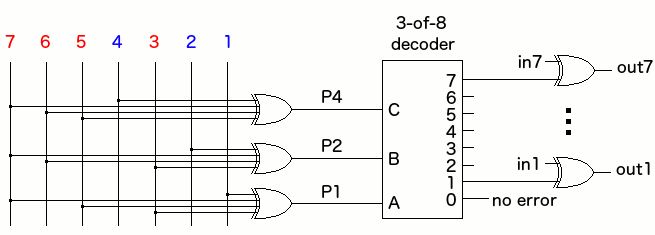
#HAMMING CIRCUIT CODER CODE#
Hamming code plays an important role in the error detection and correction of communication circuits. For the further development of nano computing, nano communication circuits should have the ability to detect and correct errors. Using QCA to realize nano communication network has broad prospects in the application field.

Compared with CMOS, it also provides faster switching speed and higher device density. A very useful feature of QCA is that it uses the Coulomb interaction between electrons to perform calculations instead of current, which makes it an ultra-low power implementation technology to avoid the problem of leakage current. It is a nano-level technology in which the cell has nano-size, ultra-low power consumption, and high clock rate. Quantum-dot cellular automata (QCA) is a research topic that has the potential to design new hardware components. As technology advances, new nanoscale computing designs are emerging. In order to continue to shrink circuits and improve the performance of microprocessors, CMOS alternatives are indispensable. When CMOS technology shrinks to the nanometer level, the design complexity is even higher. The above designs have been functionally verified by the QCADesigner.ĬMOS technology is approaching its physical limits, and the problems such as quantum effect and power dissipation have become more prominent. The proposed Hamming code circuit has a great performance improvement in terms of cell number, area, and clock delay. Compared with the Hamming code related designs in other studies, the proposed design has better hardware complexity.
#HAMMING CIRCUIT CODER GENERATOR#
For different generator matrices in Hamming codes, the proposed design only needs to modify the corresponding interconnection lines in the communication network without major adjustments to the circuit structure to achieve the same function. The general design method of QCA Hamming code communication network is also given. Based on the proposed structure, (7,4) and (15,11) Hamming codec circuits are implemented. In this manuscript, a bottom-up method is adopted to design and implement novel 3–8 and 4–16 decoders. The efficient implementation based on QCA has been verified in some nanocommunication code circuits.

Quantum-dot cellular automata (QCA) is one of the most promising technologies for designing digital circuits with high integration, ultra-low energy consumption, and high switching speed.


 0 kommentar(er)
0 kommentar(er)
